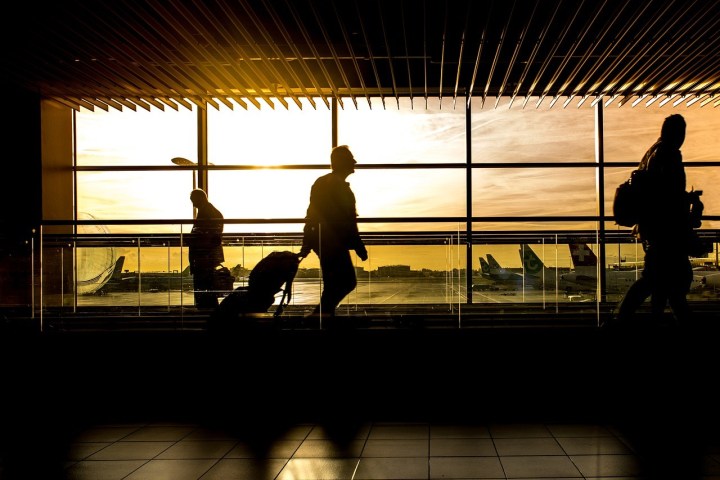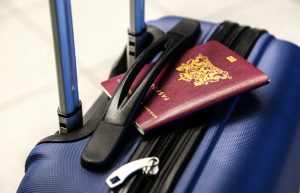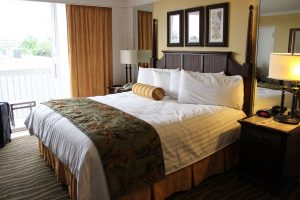

This is Part 3 in a series on Personal Security during travel.
As you’re packing for your trip, make sure you go through the pre-travel planning process to ensure that you’re dotting all your “I”s and crossing all your “T”s.
- Ensure all of your passports, visas, tickets, cash and itineraries are in order;
- Conduct a map reduce of the area in which you’ll be travelling;
- Send an info package to a relative or trusted friend in case you need help while abroad;
- Arrange for your home and affairs to be taken care of while you’re away.

Read more about the above in the previous posts on Travel Security:
When preparing to go (either to the airport, train/bus station sea port, etc – it applies to all equally), ensure you charge all of your devices and that you have the appropriate connectors and adaptors for the region in which you will be travelling.
Take an empty water bottle and some snacks with you so that you can refill it post-security and always have a drink. You never know when you may be delayed and airports are notoriously expensive.
At the airport, keep your passport and ticket/boarding pass hidden to avoid people targeting you and gleaning information about you and your travel. As you walk through the airport, keep an eye open for places of cover should an attack occur. Columns and pillars, concrete planters, walls and corners as well as exit stairwells can offer ballistic protection. Try to stay away from public-side-facing windows.

As a general rule, try to pack for quick and easy movement. Travel light and fast. I avoid checking a bag if I can which enables easier movement and less of a chance of lost luggage. Stick with low-profile, non-tactical-looking luggage and bags. The only downside is that if you’re travelling with items prohibited from going in the cabin of the plane, you’ll be forced to check a bag. DO NOT try to sneak anything through security as it’ll either be seized (best case) or you’ll end up arrested (worse) depending on the local laws.
Here’s another tip: DON’T AGREE TO TAKE SOMEONE ELSE’S BAGS FOR THEM! It doesn’t matter if it’s an old lady, a “man of the cloth” or a child “travelling alone”. Carry only your bags, keep a vigilant watch over them at ALL times, don’t leave them unattended and say no to anyone asking you to carry something for them.

If you find yourself waiting on the public side of an airport or rail terminal, keep your eyes open for suspicious activity. Set yourself up where you have a good vantage point and no one behind you, close to cover. If you observe someone suddenly get up and walks away from a bag or parcel, quickly find cover and tell security services. If you leave your bags unattended, you risk losing them to security.

While travelling, do your best to be aware of the local news and goings-on. This can give you a feel for the local environment in which you find yourself and to possibly give you a heads-up in case of impending bad weather, criminal threats or civil unrest.
ALWAYS secure your passport. It is the most important item you have when travelling abroad. And depending on the country of issue, it can be worth upwards of $50k on the black market.

When you arrive to your destination and have cleared customs/immigration, you can then “tool up” with any gear you have legally transported or acquire locally-sourced tools.
Do your best to blend in with the local population. Look at online photos of locals and get a sense for what they wear and how they go about their days. Consider stopping by a local store to purchase similar clothing to wear while you’re “in country” and then leave them behind when returning home. With this method, you are essentially renting a “persona”and will bring down your visibility as a tourist to some degree. Leave your “5.11 Tuxedo” at home and get something local instead. Oakleys, Salomons and 5.11 pants and shirt that all say “covert” are usually anything but.

If you’re in a situation where no amount of “low-key” will do it (such as travelling with your family or in a group) do the best you can and always remain polite. A smile and a kind word can go a long way in the right context. With this in mind, don’t discuss your personal life with strangers. You don’t know who they are or how they could use that information against you. Steer your conversations about their home country under the auspices of learning more about them.

When travelling to and from your accommodations (or any base), vary your route and timings and maintain your situational awareness at all times so that you’re not being observed or followed.
When moving around, don’t carry all of your cash in the same place on your person. Break it up across your pockets, decoy wallet and other stashes. Use credit cards when you can to reduce the visibility of cash.

When on the ground, take a few mins to orientate yourself to the area using your maps and the local geography. Look for common landmarks and pay attention while being transported from the airport.
When you’re first able, make contact and touch base with the folks back home to give them a status report that you’ve landed and what your situation is. This allows those back home to have a time marker as to when was the last contact they had with you, where you were and what you were doing should something happen.

Beware of situations where you are consuming alcohol or drugs (say no to drugs, even if the jerk-off on the beach tells you it’s completely legal, you have no idea what is in it and if you’re being set-up) in the company of those who you do not trust completely. Also, try and stick to bottles and cans instead of drinks mixed out of view, lest someone spike it. And never leave your drink unattended or unobserved.
**The video below shows exactly how easy it is to have your drink spiked**
While travelling around, try to use ride-sharing services like Uber of Lyft over taxis as they are more reliable with better kept records of your trips. You’re also less likely to be robbed (as you don’t require cash to take a ride with them) and if something goes wrong, the driver, car and trip details are all stored with you and the company. If taxis are your only option, prior to getting in, ask for how much it would cost and take a look inside to ensure all looks legit and there are door handles in back. Either way, ALWAYS have a method of escape (some form of window breaker) to get out should something go sideways.

On the more likely side, you’re also more likely to be the victim of “tourist pricing” when arranging rides. For example, a local taking a taxi may only get charged $4 whereas a tourist will get charged $40 for the same ride.
Change money in banks or approved locations with security, not back alley “cambios” where you might get mugged after people know you have cash.

When buying supplies in local stores, keep an eye on the price tags that are on articles and ask what currency they represent. And if they start taking prices off articles as they “ring them in”, you’re being scammed. They’ll present you with a price which you won’t be able to recall and you’ll be left wondering what happened. You’re better served to walk away and try elsewhere unless you’re really in a jam.
When checking into your accommodations, ensure that the bellhop goes in first, and that the lights are on. Check every nook and crannyImmediately ensure that the doors and locks are all in working order and use a door wedge to secure the door once you’re alone and have engaged all of the locks. Draw the curtains and turn on the tv when you’re not in your room and hang the Do Not Disturb sign on the knob.

In respect to OPSEC (OPerational SECurity), ensure that you aren’t posting too much on social media which can identify things like your room, locations you’re visiting and valuables you may have on you. Post after you’ve returned or at least left the location.
In the event of a disaster or large-scale event, make your way by whatever means necessary to the Canadian (in my case) or alternately, to an allied nation’s embassy for protection and support. The United States, Great Britain, Australia, New Zealand or another Commonwealth country will support you when carrying a Canadian passport.

Situational awareness, pre-planning, having local currency (and knowing the exchange rate) and a resilient mindset will help deal with most problems you would encounter on your travels. Travel light, travel low-profile and arm yourself with as much knowledge about the area you’ll be in. Remember, low-profile equals a difficult target.
GTFO Wrist strat available from Oscar Delta here.
Till next time, stay safe and stay crafty.



















































